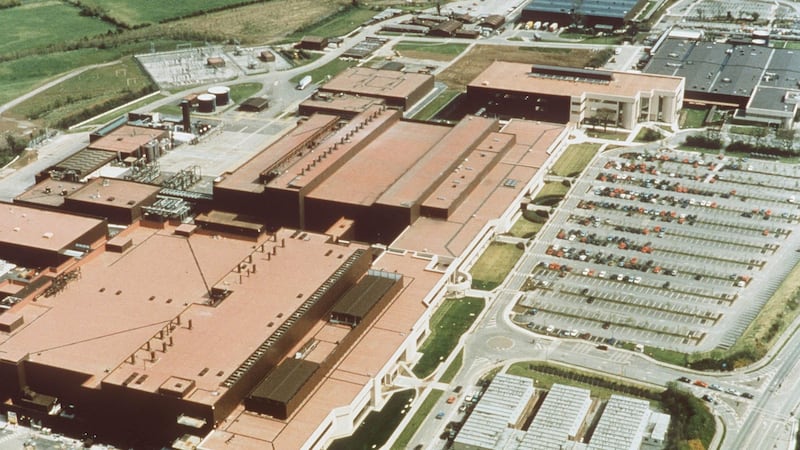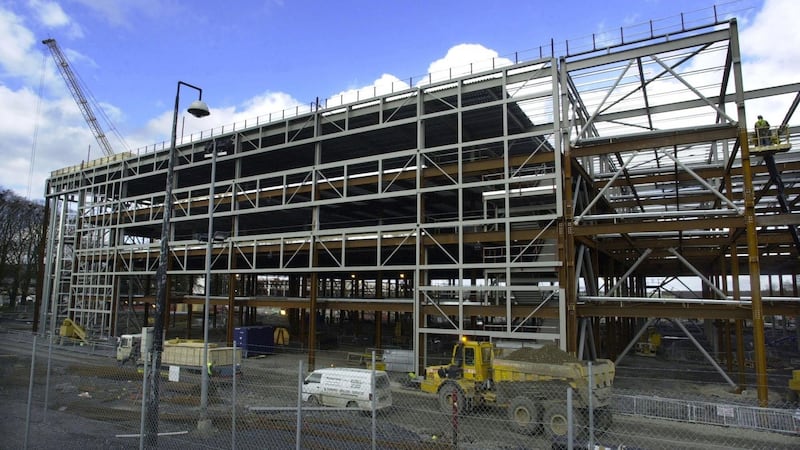Intel’s investment in Ireland is about to top $22 billion (€18.6 billion). That is an impressive feat and even more so when you consider the fact we very nearly didn’t get a penny from the company.
When IDA Ireland first started trying to woo Intel back in the late 1980s it had a hard task ahead of it.
The chipmaker was keen to expand its manufacturing capability outside of the United States but Ireland was just one location that company executives were considering.


“They were on a whistle-stop tour, visiting about 10 countries over the space of two or three weeks and so we were just one of many that were being considered,” remembers Kieran McGowan, who served as chief executive of IDA Ireland between 1993 and 1998.
McGowan, who was personally involved in the negotiations that brought the chipmaker to Ireland, had a good track record of bringing in multinationals.
“It was hard to get Intel over here at all initially and it took a long time. They were considering a number of different places and it was by no means sure that we were being taken seriously as contenders,” he says.
Martin Cronin, who was at IDA Ireland for more than 20 years, during which he served as director of operations, was also privy to those early negotiations with Intel.
“I remember our meeting was finishing up and Kieran cheekily said to them, ‘Come back to us when you’re narrowed the choice down to Ireland or Scotland’. They didn’t laugh and likely thought we were being above ourselves, but they came back to us looking sheepish a few weeks later and admitted that it was between us or them,” he says.
Attractive tax rate
Cronin, who went on to become chief executive of enterprise advisory board Forfás, notes that while Scotland already had fabrication facilities for making semiconductors, Ireland had an attractive tax rate and operating environment.
“One key issue that came up was that Intel was unsure if we had the skills base to both build the plant and to operate it once up and running. Fortunately, while we hadn’t previously developed much in the way of fabrication facilities, the construction industry had done a lot of complex work for the pharmaceutical sector,” he says.
“In addition, we got a recruitment agency to scour the world. They talked to around 1,000 Irish engineers who were working in the semiconductor sector to see if they would have an interest in returning home if the work was there. Around 80 per cent of them signalled an interest, so that helped persuade Intel,” adds Cronin.
The next question was where the new plant would be located – Intel had little interest in Leixlip initially, according to McGowan.
“They had their hearts set on a site in Dublin, but the reason they eventually settled on Leixlip was because the county manager and the contract engineer helped them with the application for planning permission so it went through quickly,” he says.
Intel announced its decision to locate its European headquarters in Ireland at a former 146-hectare (360-acre) stud farm in Leixlip in 1989 with the first chip manufactured there in 1993.
McGowan says that once Intel had committed, it was a dream to work with. His successors, such as Martin Shanahan, say it continues to be.
Cronin puts this down in part to the fact that the company has always had Irish people in charge locally.
Jim O’Hara, who led the company locally from 2002 till 2010, says the Irish operation has been well regarded internally since the earliest days.
“Intel has always looked fondly on Ireland as a place to do business. We had a good experience when we started out and that has continued. Intel has huge confidence in its Irish workforce because it has continually delivered over 30 years,” he says.
McGowan recalls someone in Intel telling him at the beginning that many of the contractors coming on to the site during the building phase would likely never leave.
“He was right because many of those companies are still working with Intel over 30 years later,” says McGowan.
Catherine Murphy, Social Democrats TD for Kildare North, said the new investment is hugely important given the number of jobs that Intel supports locally.
“It isn’t just the number of people employed directly by Intel,” she said. “There are also a huge number of ancillary jobs that have arisen as a result from the company’s presence in Leixlip,” she says.
Intel has also been good for Ireland Inc as a whole with many still seeing it as a jewel in IDA Ireland’s crown.
‘Game changer’
“It was a game changer for Ireland when we were out knocking on doors internationally,” says Barry O’Dowd, formerly head of the emerging business and new forms of investment divisions at IDA Ireland.
“Our credibility as an investment location went through the roof on the back of Intel’s decision and others sat up and asked ‘why?’. They wanted to know what had Ireland to offer. Intel validated our talent depth and availability claims on the international stage,” adds O’Dowd, who is now chair of Yew Grove Reit.
That the chipmaker is now in the process of doubling manufacturing capacity and intending to create 1,600 new roles is not only a positive development in itself, but also further cements its relationship with the State.
It comes as the company announced a $20 billion (€16.9 billion) plan to expand its advanced chip-manufacturing capacity globally and restore its reputation on the international stage.
"Intel is back. The old Intel is the new Intel," is how new chief executive Pat Gelsinger put it as he made the announcement earlier this week.
The fact the company’s Leixlip facility forms a central part of Intel’s plans is testament to the role the plant has played over the years.
“Intel’s new chief executive, has set out an ambitious plan for Intel globally and it is clear, and most welcome, that Ireland is an integral part of its plans,” says current IDA Ireland chief executive Martin Shanahan.
“The fact that 7-nanometer microchip technology is coming to Kildare, to what is already one of the most advanced manufacturing facilities in the world, is very exciting, particularly at a time when Europe and the world is increasingly focused on digitisation. Intel is clearly stating it is the solution to future digital needs and Ireland is part of that,” he adds.
News of Intel's new investment had been expected as a planning permission application had been submitted in early 2019, indicating the number of roles likely to be created. There is one potential concern ahead, which is a court hearing later this year involving local landowner Thomas Reid, who has objected to the plan.
If this case can be overcome successfully then it will be full steam ahead for the latest expansion of Intel’s operations here.











